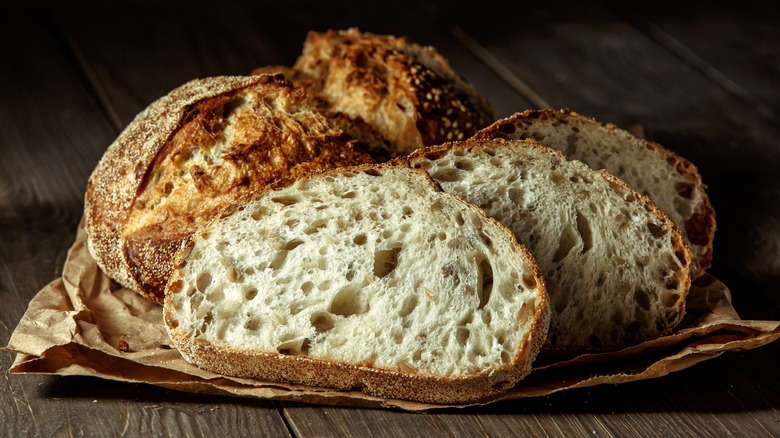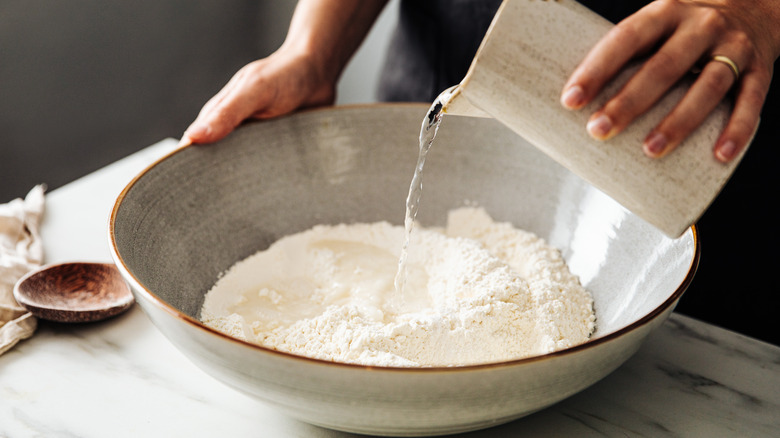The Hydration Mistake That Leads To A Tight Sourdough Crumb
While the pandemic sourdough-making craze may be in the past, many people still haven't moved on from lovingly nurturing their starters and making a fresh loaf every now and then. Even after dozens of loaves, though, you can still end up with one of the biggest sourdough pitfalls: a tight crumb. When making sourdough, you want plenty of large air pockets, which make for a wonderfully soft and cloud-like bread beneath the crumbly crust. A tight crumb, on the other hand, makes for a dense, chewy texture.
The culprit behind your tight-crumb sourdough might be the result of one sourdough mistake: improperly hydrating the dough before baking. Without enough water in the mix, air pockets won't form as the dough heats up during the baking process. Think of a pot of boiling water and its large bubbles versus a pan with just a bit of water in it — the water in the shallow pan will evaporate and dry out before it can achieve large bubbles, which you need in sourdough to make those delightful air holes. Use caution, though, as overly wet dough can make your bread too airy (yes, this is possible). This type of bread lacks that al dente, pleasantly chewy texture.
Extra water and time may be required
Add plenty of water to your dough. Many factors can contribute to your go-to sourdough recipe no longer working, such as the climate, the season, and your altitude. So if you wind up with a tight crumb, notice the dough is a bit on the crumbly side, or are cooking on a particularly dry day, add a bit more water to your dough in the levain period — this is the step in which you mix the starter, salt, water, and flour before the initial rising period. Add water incrementally, a tablespoon or so at a time, until there's no dry flour but the mixture isn't yet soupy or over-saturated. This basic step will go a long way in ensuring you achieve a nice, open crumb.
If that doesn't seem like a reliable enough fail-safe, implement an autolyse period. This is an extra step that not every recipe calls for. Essentially, before you combine the flour and water with the starter and salt, allow the flour and water to have a resting period on their own for up to an hour. This allows the flour to become fully hydrated before it's mixed, which gives the gluten bonds a head start and makes the dough come together faster with less kneading. With enough water and enough time to completely hydrate, you'll end up with a dough that expands beautifully in the oven, leaving you with that coveted open-crumb texture that sourdough enthusiasts love.

